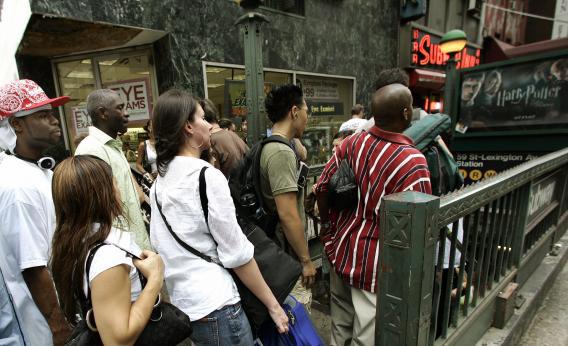Cities around the world are embracing technology to improve services and conditions in urban life. Mobile apps like SeeClickFix and Street Bump are great ideas for crowdsourcing the locations of nuisances like potholes and vandalism, and open-data initiatives could bring a bevy of helpful services to improve cities. Given that cities are growing faster than suburbs, as Will Oremus pointed out in Future Tense yesterday, these projects may be more important than ever. But how can “city 2.0” identify problems that most people might not think to report? Maybe through viral videos.
Brooklyn filmmaker Dean Peterson noticed that, for some reason, one step at his subway station was slightly taller than all the others. As you might expect, people tripped over it all the time. So he grabbed his camera and spliced together a full minute of people stumbling. The video flew past 400,000 views in its first 24 hours, and crews were out making repairs before the day was done.
It’s an interesting case study for the smart-cities concept. The uneven stair, in this case, is the pothole of the walkable city. It’d be great if everyone who tripped over it pulled out their smartphones, launched an app, and reported the problem (which has probably existed for years). But unlike a pothole in the street, it’s easy for walkers to miss that the stair is the problem here. There’s no app to remedy that, but luckily Peterson’s version of data collection worked.
For all the ways cities can use mobile technology to improve conditions, this video is a reminder that smart city plans, and the apps they use, still rely on sheer numbers to get things done. Whether those numbers come through formal complaints, mobile notifications, or viral hits, there’s still some critical mass needed to induce action, and even the best app won’t keep problems from slipping through the cracks. On the other hand, it’s a promising sign that smart cities will be attuned to the power of creativity and viral videos. So if you think you can’t fight city hall, you might just have to make it laugh.
